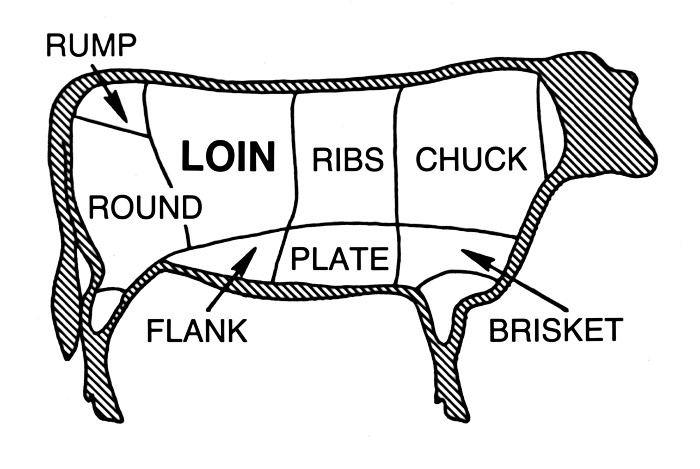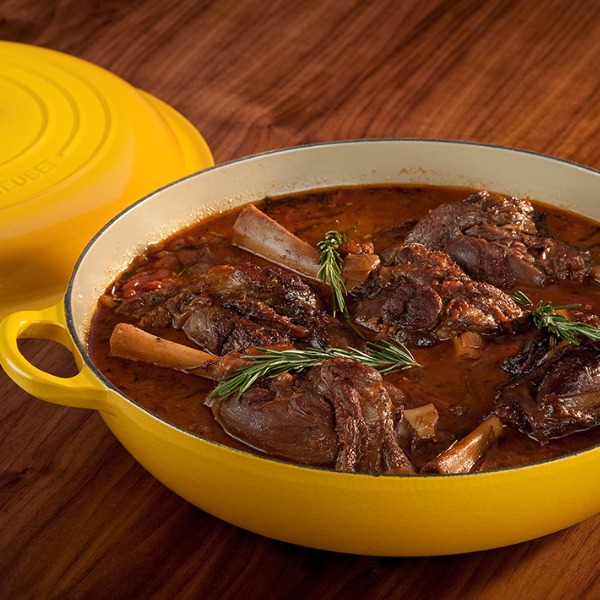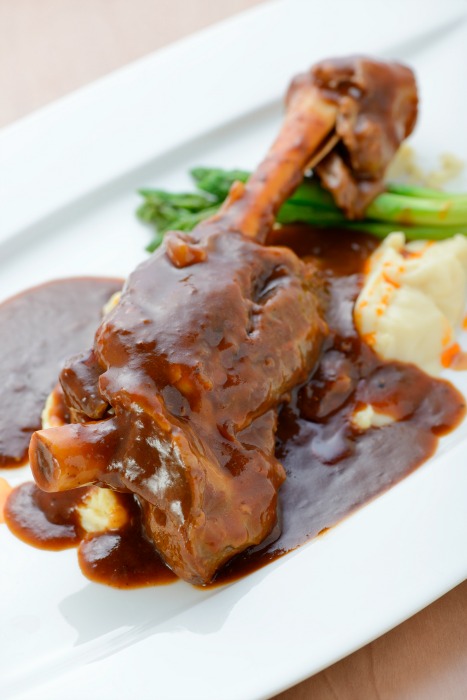Ask the Experts: How to Braise Meat
Posted by Julie on Oct 24th 2016
Q: The holidays are coming, and I'm going to have lots of guests to feed. Of course I want to serve delicious meals, but I can't afford to go all out for this many people. What do you recommend?
A: We have good news for you. Once you know how to braise meat properly, you can make an outstanding one-pot dish that will impress your guests and won't break your grocery budget. Braising is a cooking method that uses low and slow heat along with liquid. It turns tough cuts of meat into tender main dishes, complete with rich and flavorful sauce.
How to Braise Meat: Choose the Right Meat
Tough cuts of meat come from muscles that animals use more often. Brisket, chuck and round are cuts of beef that are all ideal for braising. Tender cuts of beef, like ribeye and Porterhouse, come from the areas closer to the animal's backbone. They're best when cooked with higher heat for shorter periods. Refer to this list of tough cuts and tender cuts when choosing a cooking method.

Tough cuts have more collagen, which is a connective tissue that holds muscle fibers together. Collagen dissolves into gelatin when cooked with liquid at low temperatures over a long time. As collagen dissolves, the muscle fibers separate, and the meat becomes tender.
How to Braise Meat: Choose a Braising Liquid
You can follow a recipe, or you can get creative with your braising liquid. Try using broth or stock, wine or sherry, or even beer or cider. The liquid is intended to add more flavor to your meat, so choose something that complements the flavor profile of your dish.
Don't fully submerge your meat. For one thing, you will eventually reduce your braising liquid into a sauce. More liquid means more reduction time. You want just enough liquid to keep the cooking environment moist and result in a flavorful sauce with rich texture.
How to Braise Meat: Choose a Cooking Pan
Because braising entails cooking on both the stovetop and in the oven, you'll want a pan that does it all. The size of the vessel will depend on how much you're cooking. We love this breakdown by The Daily Meal which explains the pros and cons of braisers, Dutch ovens, and sauté pans.

You may prefer cast iron, like the braisers and Dutch ovens from Le Creuset. Or try a stainless steel sauté pan. We do recommend staying away from nonstick cookware for braising, because you won't get the wonderful browned bits that make the sauce so delicious.
How to Braise Meat: Start by Searing
While braising primarily involves cooking meat low and slow with liquid, it's well known that searing it first can make a big difference in the end. The idea isn't to cook the meat through but to brown the outside and start building flavor. The drippings from searing will add flavor to the braising liquid, and the caramelized crust on the meat will be tasty too.
How to Braise Meat: Then Add Mirepoix
Before adding liquid and starting to simmer your meat, try this suggestion from Bon Appétit. Dice up carrots, celery and onion (that's called mirepoix), remove the meat from the pan and sauté the vegetables in the drippings. Once the mirepoix has browned, it's time to add the liquid.
How to Braise Meat: Next, Deglaze
Don't put the meat back in yet. First, you'll want to deglaze the pan. Add the braising liquid -- broth, stock, wine or even some water. Use a spatula to scrape up all the browned bits that are stuck to the bottom and stir. Just like searing the meat beforehand, deglazing adds another layer of flavor to your dish.
How to Braise Meat: Cook It Low and Slow
After deglazing, put the meat back in the pan. Bring it to a simmer on the stovetop, and then put it in the oven. Keep it covered. Bon Appétit recommends an oven temperature of 325°F, but you want the liquid temperature to stay below the boiling point. Monitor it with a cooking thermometer, and reduce the oven temperature if the braising liquid ventures higher than 180-190°F.
How to Braise Meat: Bonus Points and Extra Credit
When the meat is fork tender and done, you could remove the pan from the oven and serve your dish as-is. Or you can take it up a notch and really wow your guests.

Follow Bon Appétit's instructions for reducing the sauce. See the photo of a braised lamb shank above -- that's the sauce consistency you want to achieve. Don't forget to taste before serving.
Spoon the sauce into a small serving bowl for guests to add to their meat and vegetables. Finally, you can take yet another smart tip from Bon Appétit and serve with fresh herbs or flavored salts.
Braising is a surprisingly simple and economical way to feed a crowd and impress them too!
 Free shipping over $49
Free shipping over $49










